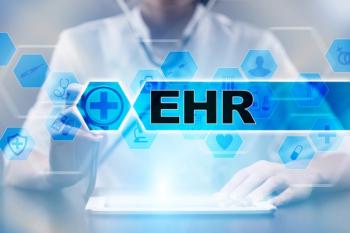
Better data exchange is key to improving patient health outcomes
Interoperability solutions can also help health care industry achieve Quadruple Aim
Despite the hard work of organizations like the Workgroup for Electronic Data Interchange, challenges persist with disjointed and disconnected health care data systems. While the widespread adoption of
What we do know is that
We can’t set it and forget it. There’s no box-checking when it comes to ongoing compliance and interoperability. Here’s why:
- Interoperability is a differentiator for payers and providers across the continuum. Consumers are empowered to select their doctors based on preference, convenience, and many other factors. Provider organizations that can exhibit streamlined interoperability and the sharing of data between other provider organizations will stand out among the competition.
- Compliance with interoperability standards provides security for patients. Health care consumers, especially those representing Gen Z and now Gen Alpha, are far more comfortable sharing personal data through electronic means than any other generation before them.
- Interoperable data continues to push forward the Quadruple Aim’s framework by creating a more integrated system that cuts administrative work and allows the provider to focus on quality care.
A differentiator for payers and providers
How many providers have more than one or two patient portals for our various health care needs? Imagine a world where there was just one portal. That’s a long-term solution to an antiquated problem. But it must be modular to ensure flexibility, and integrated to ensure health data is captured for every patient.
More importantly, one portal will unify health data and help the U.S. health care industry further stand out as a differentiator. The finance industry, for example, can teach us how to use real-time data flow. If you’re a Bank of America customer, but you need cash at an ATM right now, you are pretty much assured that any bank, or standalone ATM at a roadside gas station, will give you cash for a $3 to $4 transaction fee. When can we have that kind of access to health care data? This kind of unilateral solution will have to keep pace with legislation and regulations.
Data security for patients
While cybercrime is expected to cost the world $10.5 trillion by 2025, up from $3 trillion in 2015, according to
Interoperability and compliance regulations, such as the
Working within the Quadruple Aim framework
The fourth pillar of the
So, what’s next?
The future of interoperability relies on adoption and compliance. Health care organizations are being asked to innovate and grow to keep up with current and future changes to legislation and mandates. In order to quickly adapt and weave interoperability standards into an organization's process, it's imperative to invest in long-term infrastructure that fuels future innovation. This not only adds value to payers and providers, but more importantly, members and patients. Through enhanced technology solutions and electronic interchange of information, patients and health systems can sleep easily knowing their data is secure. Interoperability ensures systems are updated, universal, easy-to-use, and care is coordinated, thus meeting the quadruple aim framework.
Michael Pattwell is principal business advisor at
Newsletter
Stay informed and empowered with Medical Economics enewsletter, delivering expert insights, financial strategies, practice management tips and technology trends — tailored for today’s physicians.















